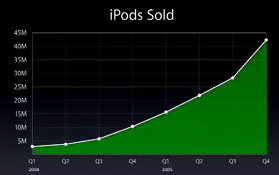
GUEST POST from Greg Satell
In November 1989, there were two watershed events that would change the course of world history. The fall of the Berlin Wall would end the Cold War and open up markets across the world. That very same month, Tim Berners-Lee would create the World Wide Web and usher in a new technological era of networked computing.
It was a time of great optimism. Books like Francis Fukayama’s The End of History predicted a capitalist, democratic utopia, while pundits gushed over the seemingly neverending parade of “killer apps,” from email and e-commerce to social media and the mobile web. The onward march of history seemed unstoppable.
Today, 30 years on, it’s time to take stock and the picture is somewhat bleak. Instead of a global technological utopia, there are a number of worrying signs ranging from income inequality to the rise of popular authoritarianism. The fact is that technology and globalization have failed us. It’s time to address some very real problems.
Where’s the Productivity?
Think back, if you’re old enough, to before this all started. Life before 1989 was certainly less modern prior to 1989, we didn’t have mobile phones or the Internet, but for the most part it was fairly similar to today. We rode in cars and airplanes, watched TV and movies, and enjoyed the benefits of home appliances and air conditioners.
Now try to imagine what life was like in 1900, before electricity and internal combustion gained wide adoption. Even doing a simple task like cooking a meal or cleaning the house took hours of backbreaking labor to haul wood and water. While going back to living in the 1980s would involve some inconvenience, we would struggle to survive before 1920.
The productivity numbers bear out this simple observation. The widespread adoption of electricity and internal combustion led to a 50-year boom in productivity between 1920 and 1970. The digital revolution, on the other hand, created only an 8-year blip between 1996 and 2004. Even today, with artificial intelligence on the rise, productivity remains depressed.
At this point, we have to conclude that despite all the happy talk and grand promises of “changing the world,” the digital revolution has been a huge disappointment. While Silicon Valley has minted billionaires at record rates, digital technology has not made most of us measurably better off economically.
Winners Taking All
The increase of globalization and the rise of digital commerce was supposed to be a democratizing force, increasing competition and breaking the institutional monopoly on power. Yet just the opposite seems to have happened, with a relatively small global elite grabbing more money and more power.
Consider market consolidation. An analysis published in the Harvard Business Review showed that from airlines to hospitals to beer, market share is increasingly concentrated in just a handful of firms. As more expansive study of 900 industries conducted by The Economist found that two thirds have become more dominated by larger players.
Perhaps not surprisingly, we see the same trends in households as we do with businesses. The OECD reports that income inequality is at its highest level in over 50 years. Even in emerging markets, where millions have been lifted out of poverty, most of the benefits have gone to a small few.
The consequences of growing inequality are concrete and stark. Social mobility has been declining in America for decades, transforming the “land of opportunity” into what is increasingly a caste system. Anxiety and depression are rising to epidemic levels. Life expectancy for the white working class is actually declining, mostly due to “deaths of despair” due to drugs, alcohol and suicide. The overall picture is dim and seemingly getting worse.
The Failure Of Freedom
Probably the biggest source of optimism in the 1990s was the end of the Cold War. Capitalism was triumphant and many of the corrupt, authoritarian societies of the former Soviet Union began embracing democracy and markets. Expansion of NATO and the EU brought new hope to more than a hundred million people. China began to truly embrace markets as well.
I moved to Eastern Europe in the late 1990s and was able to observe this amazing transformation for myself. Living in Poland, it seemed like the entire country was advancing through a lens of time-lapse photography. Old, gray concrete building gave way to modern offices and apartment buildings. A prosperous middle class began to emerge.
Yet here as well things now seem to be going the other way. Anti-democratic regimes are winning elections across Europe while rising resentment against immigrant populations take hold throughout the western world. In America, we are increasingly mired in a growing constitutional crisis.
What is perhaps most surprising about the retreat of democracy is that it is happening not in the midst of some sort of global depression, but during a period of relative prosperity and low unemployment. Nevertheless, positive economic data cannot mask the basic truth that a significant portion of the population feels that the system doesn’t work for them.
It’s Time To Start Taking Responsibility For A Messy World
Looking back, it’s hard to see how an era that began with such promise turned out so badly. Yes, we’ve got cooler gadgets and streaming video. There have also been impressive gains in the developing world. Yet in so-called advanced economies, we seem to be worse off. It didn’t have to turn out this way. Our current predicament is the result of choices that we made.
Put simply, we have the problems we have today because they are the problems we have chosen not to solve. While the achievements of technology and globalization are real, they have also left far too many behind. We focused on simple metrics like GDP and shareholder value, but unfortunately the world is not so elegant. It’s a messy place and doesn’t yield so easily to reductionist measures and strategies.
There has, however, been some progress. The Business Roundtable, an influential group of almost 200 CEOs of America’s largest companies, in 2019 issued a statement that discarded the old notion that the sole purpose of a business is to provide value to shareholders. There are also a number of efforts underway to come up with broader measures of well being to replace GDP.
Yet we still need to learn an important lesson: technology alone will not save us. To solve complex challenges like inequality, climate change and the rise of authoritarianism we need to take a complex, network based approach. We need to build ecosystems of talent, technology and information. That won’t happen by itself, we have to make better choices.
— Article courtesy of the Digital Tonto blog
— Image credit: Pixabay
![]() Sign up here to join 17,000+ leaders getting Human-Centered Change & Innovation Weekly delivered to their inbox every week.
Sign up here to join 17,000+ leaders getting Human-Centered Change & Innovation Weekly delivered to their inbox every week.



 Now that I’ve got your attention, let’s talk about homosexuality and whether it has any impact on innovation. There probably are two no more polarizing topics in the United States than homosexuality and abortion. But the truth is that if both sides of the political and religious spectrum focused on the
Now that I’ve got your attention, let’s talk about homosexuality and whether it has any impact on innovation. There probably are two no more polarizing topics in the United States than homosexuality and abortion. But the truth is that if both sides of the political and religious spectrum focused on the 


 It is much easier to lose your nerve than it is to regain it, so better not to lose it in the first place. I have lost my nerve before and made decisions I regretted for a long time after they were made. Acting out of fear leads to poor decision making and a lack of leverage that, in turn, leads to unfavorable outcomes. That is why you must maintain your nerve and focus on the actions you need to take to create positive change, rather than allowing yourself to be overtaken by fear. Fear is one of those emotions that grows to fill the space.
It is much easier to lose your nerve than it is to regain it, so better not to lose it in the first place. I have lost my nerve before and made decisions I regretted for a long time after they were made. Acting out of fear leads to poor decision making and a lack of leverage that, in turn, leads to unfavorable outcomes. That is why you must maintain your nerve and focus on the actions you need to take to create positive change, rather than allowing yourself to be overtaken by fear. Fear is one of those emotions that grows to fill the space. The old way of winning the talent wars was to search for and hire the very best talent and keep them inside your own four walls by offering them competitive compensation, benefits, and perks. Your hope was that your talent is better than your competitors’ talent. But over the last couple of decades, companies have increasingly found that employees who pursue what they do with passion will outperform an employee with a gun to their head every time. Circuit City learned very publicly that people are not commodities and went out of business from treating them as if they were. At the same time, we know that diversity is very important and hard to foster internally. And so it is to get to this diversity of thought in order to accelerate product launch and innovation timelines that companies must open up – it is a global economy with a global talent pool.
The old way of winning the talent wars was to search for and hire the very best talent and keep them inside your own four walls by offering them competitive compensation, benefits, and perks. Your hope was that your talent is better than your competitors’ talent. But over the last couple of decades, companies have increasingly found that employees who pursue what they do with passion will outperform an employee with a gun to their head every time. Circuit City learned very publicly that people are not commodities and went out of business from treating them as if they were. At the same time, we know that diversity is very important and hard to foster internally. And so it is to get to this diversity of thought in order to accelerate product launch and innovation timelines that companies must open up – it is a global economy with a global talent pool. While most individuals and organizations natural reaction to an economic downturn is fear and retrenchment, they also present a time of great opportunity.
While most individuals and organizations natural reaction to an economic downturn is fear and retrenchment, they also present a time of great opportunity.